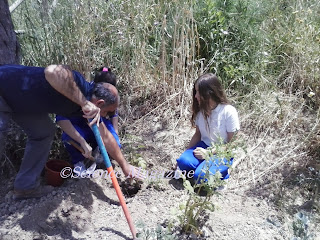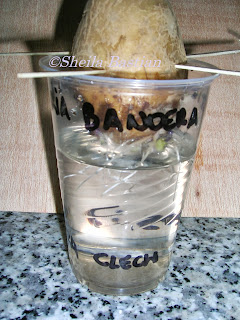 |
| Iberian worm lizard |
We have had an unusual classmate in the laboratory! Between us all, we have looked after an Iberian worm lizard that one of the school's maintenance workers found on the school grounds. We put him in a plastic fish tank with stones, soil, water. We collected ants and earthworms to feed it.
At a first glance, the Iberian worm lizard looks like an earthworm but has nothing to do with them. These animals are vertebrates, they are reptiles that belong to the suborder Amphisbaenia. They are thought to be the only Amphisbaenia in Spain and since they became extinct in the north of Africa they are considered an edemic species of the Iberian Peninsula, that is, they are only found in this region and nowhere else in the world. They have a spinal column and scaly skin. They bury themselves under the ground and don't come up to the surface very often. Not a lot is known about these tiny reptiles. The Iberian worm lizard is called "culebrilla ciega", in spanish and its latin name is "Blanus cinereus". They have a long ringed body with sclales. The head is small and pointed with tiny eyes. It has a small tail and a forked tongue, when it opens its mouth it reveals a set of tiny sharp teeth.
Check out this video! This is when we put it in its new habitat. You can see how it quickly buries itself! If you look very carefully you can see the scales on its body and its head and tail.




















































